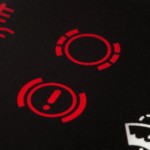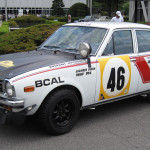Summer is upon us. The kids are off. If you have time on a sunny Saturday, one way to put a smile on everyone’s face, and feel sunny yourself is to put a decent shine on the family car.
There is a right way and wrong way to wash a car. This promises to be the last article you ever need to read about how to properly wash and polish up your favorite set of wheels. At Kenya car bazaar, we have spent time considering the not only the finish of our own car, but the legion of swirl marks that mar it. Informal surveys at stop lights revealed that nearly every car appears to have fallen victim to the same thing: a car washing technique that removes most of the surface dirt but that, at the same time, ruins the silky sheen of new-car paint.
This year we decided we were going to figure out how to get those marks out, and how to wash our car so that we wouldn’t put any more marks in it.
Our Bucket List
It was a hot, sunny day, I had driven at least an hour to get there and I thought we’d get right into it. Not so – we had to wait for the outside of the car to cool down.
“You want the paint to be cool to the touch so you don’t flash dry the soapy water,” said Stoops. “A cool surface is the really critical part.”
Once the metal had cooled I was given two buckets to fill, one with soap and water, one with just water. At the bottom of each bucket was a grit guard, a round plastic baffle that rested a couple of inches above the bottom of the bucket and that kept the sponge from falling to the bottom.
First Stop:The Wheels
Then we washed the wheels first.
“It’s good to address the wheels while there’s not much of anything on them,” said Stoops. Cleaning the wheels first instead of last has the added benefit of keeping any wheel dirt from flying onto the car you just washed. Yes, we know – why did we not think of this before? The key to cleaning your wheels safely is to know what kind of wheels you have.
“Wheel cleaning products vary in the level of how delicate they are on a finish. Chrome is hardy, but bare, aftermarket, highly-polished aluminum isn’t – in fact, it is the most difficult to care for. Factory wheels, those your car was born with, are always clear-coated in some way, but once you go aftermarket you need to watch out.”
We used a mitt just for the wheels, and then a high quality brush for stubborn areas and difficult-to-reach places like the brake calipers.
Mitt … Not Brush Or Towel
The four corners done, we moved on to the body. “Washing and drying your car is where the vast majority of swirl marks are going to come from,” said Stoops, “that’s why we’re big proponents of the two-bucket method, with a grit guard in each. The point is to get the dirt off the car, then get it off the microfiber wash mitt into your rinse bucket, not put it back into the soapy water. The baffle just keeps the dirt from swirling around at the bottom of the bucket back up into your water.” Notice that Stoops said “microfiber mitt,” not “brush” or “towel.” “The biggest mistake people make is using a cotton towel or an old beach towel, and an old beach towel tends to have old beach sand in it. They’re not removing the dirt from the paint, all they’re doing is grinding it around and into the paint.”
Don’t Use Dish Soap
And if you were considering using dish-washing detergent to wash your car, well, they don’t recommend that.
“Dishwashing detergent is very effective at getting grease off dishes. Car wax and grease have similar properties, so if it’s good for removing grease it’s also pretty good for removing wax.”
We used Meguiar’s Gold Class Car Wash and Shampoo. “It doesn’t strip your wax, helps to keep the shine and it’s completely biodegradable. If you’re on a budget, try our Crystal Car Wash.”
We washed one panel at a time, starting at the top and working down: roof, hood, trunk, then the body panels, doing one panel at a time. Each panel was washed and then rinsed before moving to the next one.
The Most Important Step
“It’s critical that you dry your car,” said Stoops. “We get calls all the time from people who say they have water spots after washing their car, then they tell us they let it air dry. Well of course you’re going to get water spots. Always dry the car. Our preference is to use our water magnet, a waffle-weave microfiber drying towel – it has a specific type of microfiber weave that’s highly absorbent.”
While this will make an extra step for some people, once the car has been cleaned and finished properly it can actually go quite quickly. You can do a soft rinse - that’s taking the sprayer off the hose and letting a steady stream over the vehicle - and “it’ll sheet the majority of water off the car,” said Stoops, “and you can blot it dry. And the less you touch the finish the less change you have of marking it.”
With the surface dirt removed, it was time to make some repairs to the finish, and that meant using the clay. Not exactly the doughy ball you played with in elementary, this clay is formulated to remove the contaminants bonded to the surface of the car.
Clay For Your Clear Coat
“When you’re driving down road your car collects ‘road film,’ a generic term used to describe any and all fallout that that surface is exposed to like industrial fallout and tree sap mist,” said Stoops. “Given time, and not cleaning it off properly, it’ll start to bond to the paint. Your paint should feel literally as smooth as glass, and that’s what clay will take it back to.”
We used Meguiar’s Smooth Surface Clay Kit, which includes two 60-gram bars and a bottle of Quick Detailer to lubricate the clay and the car surface. Spray the detailer on the car and “use a light rubbing motion – you don’t need or want a lot of pressure,” said Stoops. “Back and forth or circular strokes makes no difference. You can move that clay pretty quickly and you can actually get it done pretty quickly.”
As the clay picks up the bonded contaminants it turns a dirty yellow-brown. All you need do then is fold it over – just like the doughy ball from elementary school – to expose fresh clay, then get back to it.
“In general, one bar is enough for one car, or even more than one,” said Stoops.
It was at this point that we really got excited about having spent two hours – so far – washing our car because we could feel it. Instead of the bumpy, textured finish we had arrived with – it was almost like reading braille on the roof and hood – the surface of the car was porcelain smooth.
Attack The Swirls
Then it came time to attack those swirl marks, done with Meguiar’s Ultimate Compound and a dual-action polisher. This step is not called polishing, however; it’s called paint cleaning because you’re repairing the surface of that top layer of clear paint. You can also use a foam pad for application.
“The towel marks, etchings from bird droppings, maybe a shopping cart or your kid’s bike has put a scrape in the finish, or ladies’ fingernail marks on the cups behind the door handles – all those things are below-surface defects. They’re all removed the same way,” said Stoops. “If you’re doing it by hand we like to see a little passion behind the pad, some elbow grease. Do small areas at a time, maybe a foot square, for 30 seconds to a minute and wipe it off while it’s still wet.” It is only doing its job when it’s being rubbed on or off the car, not when it’s left untouched.
“With a polisher you can go up to two feet by two feet, but half the hood is not a small area. Wipe it straight off with microfiber cloth.”
Don’t Be Afraid of the Polisher
Some DIY-ers see a polisher and turn the other way, preferring to apply by hand because of horror stories they’ve heard, but Stoops said it was a case of mistaken identity.
“People are always afraid of using the polisher. That comes from the improper use of a high-speed rotary, which is fantastic if you know what you’re doing with it, but it can burn your paint if you don’t. A dual-action polisher takes that danger out of the equation. It’s very safe and very easy to learn how to use, and yet it still has power to get results you really want to get. Don’t be afraid of it.”
This step, while getting rid of most of the small swirl marks, has the surprising affect of making the larger swirl marks more apparent. The longer, deeper marks “may show up more readily now that you’ve removed the ‘noise.’ You might just need to go at those a little more vigorously.”
With your vehicle truly clean, you’re ready to polish. Again clarifying the proper terminology, this is not to be confused with waxing.
“Since 1901 we’ve defined ‘polishing’ as the creation of a brilliant high gloss,” said Stoops. “It doesn’t clean defects, but it can go further now that you’ve removed the defects. For a daily driver that you’re not trying to win a show with, you may want to skip this step.”
The process is similar to paint cleaning but you don’t need as much ‘passion behind the pad.’ “Use a foam pad for application, do small areas, work it in lightly and work it off while it’s still wet.”
Almost Done
If you’re still with us, only now is it time to wax the car. If you’re not sure about using a carnuba or a synthetic wax, Stoops said it’s down to individual tastes.
“There may be some subtle appearance differences that come down to personal preference, but carnuba is the hardest of the naturally-occurring waxes and the best at protecting the finish, while synthetics will last longer and protect better overall.”
“The bottom line with any of them,” he said, “is to apply a thin and uniform coat. The adage that some is good and more is better’ does not apply here. More wax takes longer to dry and is harder to remove, and you gain nothing from that. You can wax the entire car at once with a foam pad, let it dry for 15 to 20 minutes – it’s the only product you let dry – then remove with a microfiber cloth.”
And that, finally, is the car kind of done … you only have the tires, headlights, engine and interior left to do.
Details, details
The tires were dressed with Meguiar’s Endurance line, which comes in gel, aerosol or trigger spray. If the car has other jewelry that you’d like to polish, you can use a wheel-cleaning product such as Hot Rims Mag or Hot Rims All Metal, since such ornaments are likely to be chromed.
Polishing the headlights was done with Meguiar’s Headlight Restoration Kit, which allows you to mount a wool pad at the end of a power drill.
The engine was the easiest part, requiring no more than a spray-on application of cleaner – this was a light-duty job – a little brushing for agitation, and a light stream of water to rinse.
For the cabin Meguiar’s offers water-based protectants in “natural shine” and “supreme shine” formulations. Our favorite part about them was that both dry to the touch, so there’s no greasy feeling or slipping and sliding to accompany the glowing leather. The company’s quick interior detailer is even safe for navigation screens, but again, and as with the tire dressing, a little bit goes a long way.
Finally done
It was hours later by the time we were finished, and completely worth it – our car looked better than it did the day we bought it. Still, the idea of needing to spend the equivalent of half a workday every Sunday cleaning our car wasn’t the most appealing idea ever, but Stoops promised us it goes much faster with practice.
“If it’s a wash and wax you can knock it out in a couple of hours if you’re quick, and 20 minutes of that is letting the wax is dry. While that’s happening you can clean up the interior.”
The company has an online forum at www.kenyacarbazaar.com with more members who can address almost any issue when it comes to car care.

![Russian Diva’s Crystal Covered Mercedes Outdoes Arab Playboys [PHOTOS]](../../../blog/wp-content/uploads/2014/09/1411397095430_wps_55_This_unique_Mercedes_was_-150x150.jpg)


